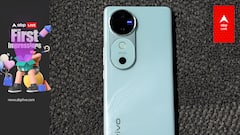Nothing Phone (2) Launch Confirmed By Company, First Teaser Out
London-based consumer electronics company Nothing on Wednesday officially announced that the Nothing Phone (2) will be launching as a premium smartphone.

London-based consumer electronics company Nothing on Wednesday officially announced that the Nothing Phone (2) will be launching as a premium smartphone. The company has shared a cryptic teaser on Twitter and is likely to introduce the Nothing Phone (2) in India too.
"Premium. Phone (2) is coming summer 2023. Sign-up for updates: http://nothing.tech/pages/event," Nothing tweeted on Wednesday.
Nothing Phone (2) will be launched in the US this summer followed by an unveiling in India, media reports say.
The Nothing Phone (2) is a much-anticipated smartphone, which will be launching this summer. Previous leaks and rumours suggested that Nothing's next phone would be launching in the third quarter (Q3). The company has teased some details about the upcoming smartphone, including key specifications, such as the processor.
As mentioned earlier, Nothing Phone (2) won't be a mid-range device like the Nothing Phone (1). The device will be powered by top-tier Qualcomm Snapdragon 8+ Gen 1 SoC. The Phone (2) may come with an updated Glyph Interface and a likely mute button.
Previous reports suggested that the smartphone will make its debut in the US, followed by other global markets, including in India.
To recall, the Nothing Phone (1) was unveiled in India last year and it was launched after much hype. It caught a lot of attention with its semi-transparent and rear side with LED pattern. The smartphone is still a unique proposition to own right now with its design and LEDs that light up in different patterns for notifications. Some of the smartphones it rivals in India, include the Redmi Note 12 Pro+.
Meanwhile, Nothing Phone (1) has been in a number of controversies since its launch with one being regarding the smartphone's advertised peak brightness which fell short in a real-world test. The Nothing Phone (1) had advertised that it is capable of achieving a peak brightness of 1200 nits, but according to a real-world test by a German tech publication named ComputerBase, the device could not go beyond a peak brightness of 700 nits.
Related Video
Apple creates a new record in iPhone sales after launch of iPhone 16 | ABP Paisa Live





































